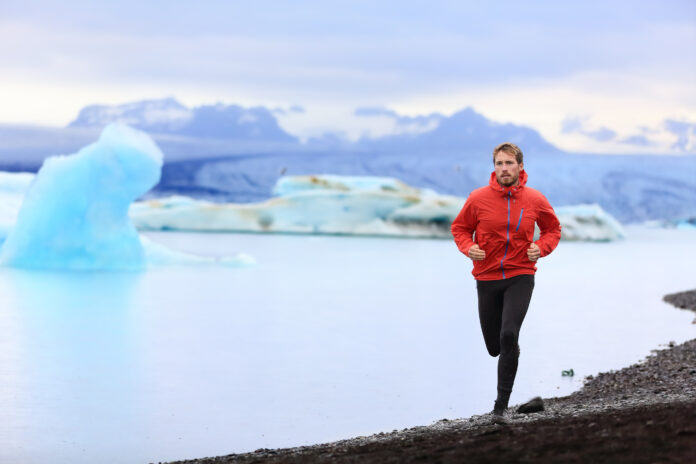
Does your running go on hiatus or move indoors during the winter? Being properly prepared for the harsh conditions can inspire you to enjoy running in the cold. You’ll also feel great knowing you’ve overcome a challenge, gone outside your comfort zone and completed your winter run, regardless of the conditions.
It’s not hard learning to survive, and even thrive, when running in the winter and here are a few suggestions to make it enjoyable.
Layer Up for Cold Temperatures
First, appropriate clothing is required and you’ll need to wear multiple layers. It’s important not to overdress or you may get too sweaty. If this happens and you start taking off layers, your sweat can freeze, causing you to lose a lot of heat very quickly.
A good layering system would include a long-sleeve technical, moisture-wicking shirt covered with a fleece jacket and a light windbreaker, preferably one with zippers that can be used to vent heat. Avoid wearing cotton as your base layer – it will get sweaty and stay wet and cold. Cover your ears with either a moisture-wicking headband or toque and wear gloves to help prevent frostbite on the fingers. You should also wear
moisture-wicking socks.
Dealing with Rain
If you live in a more temperate climate, winter rain may be more of an issue, creating a different set of challenges. When running in the rain, avoid wearing cotton to prevent chafing. You’ll also want to get some waterproof running shoes and a baseball cap to keep the rain out of your eyes. Your outermost layer should be a light, breathable, water-resistant shell. Avoid wearing a heavy rain jacket because it may cause you to overheat.
Safety First
Snow and ice, as well as limited daylight, are potential safety concerns. When running outside, it’s important to be seen. Wearing bright, reflective clothing, as well as lights, can help motorists see you. It’s important for your clothing not to blend in with your surroundings. For example, fluorescent yellow is a great colour to wear. Also, if the temperature is at or below 0° C and it’s raining, watch out for possible black ice.
In order to run on slippery, icy or snowy surfaces, you’ll need some traction aids for your shoes. Traction aids are spikes that attach to your shoes, and can be purchased at many running stores.
Running Advice
Lastly, the way you run in the winter is a little bit different. Your pace may need to be slower to avoid slipping. After your run, you must change into dry, warm clothing as soon as possible.
Winter runner Simon Ong of Calgary says he enjoys doing his long, slow runs outside in the winter because time goes faster than on a treadmill. However, he does his speed-work inside in the winter to avoid icy surfaces.
With a few changes to your running routine, you don’t have to avoid the long Canadian winter. Instead, embrace it and enjoy the benefits of running year-round, not to mention bragging rights…
















